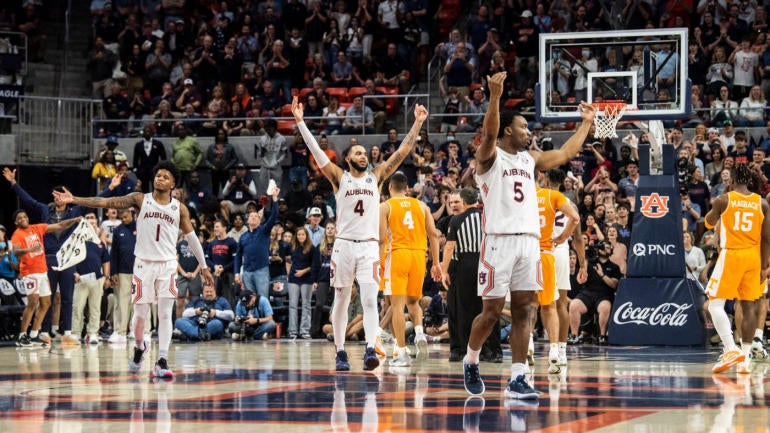
There are some unusual oddities in the bracket this year and at least a couple of seemingly unfair pairings.
First off, the bracket is not as balanced as it usually is. That is measured by adding up the overall seed rankings of the top four teams in each region. Balance is defined as having the smallest and largest totals be no more than five apart.
The teams go in the bracket initially to their closest available regional location and are adjusted from there to create balance.
This season's bracket has Kansas not only in the West Region instead of the East, which is about 100 miles closer to Kansas, but has that region with the toughest draw. The seeds of the top four teams, which includes the top 2-and 4-seeds, add up to 31 (3+5+10+13). That's a pretty rough draw for a team that arguably should have been the overall No. 1 seed but was the No. 3 overall seed.
The East is the easiest region with the lowest 1- and 2-seeds. Their overall seed total is 37 (4+8+11+14).
Normally, the committee would make adjustments to create better balance, but they also like to adjust the No. 4 seeds to do that. The problem is that the East already has the lowest-seeded No. 4 seed it can have in Tennessee. UConn cannot be in the East because fellow Big East member Marquette is already there.
Switching Baylor and Kansas State on the No. 3 line would have solved the problem. That would have had three regions adding up to 35 and the West still at 31. But, the committee chose not to do that.
Had the committee chosen to put Kansas in the East instead, as it should have, a balanced bracket would have been more easily obtained by only shifting around the No. 4 seeds.
Then it would have looked like this:
- South: Alabama, Arizona, Baylor, Indiana. 1+7+9+15=32
- West: Purdue, UCLA, Kansas St, UConn. 4+5+11+13=33
- Midwest: Houston, Texas, Xavier, Virginia. 2+6+12+16=36
- East: Kansas, Marquette, Gonzaga, Tennessee. 3+8+10+14=35
Another strange thing in this bracket is that three of the four First Four winners will be sent to play first-round games on Friday. The committee has always split one each of the 16-seed play-in winners to a Thursday and Friday site and one each of the at-large play in winners to a Thursday and Friday site. In fact, last year, they had to swap seeds of the play-in winners to accommodate that. This year, both at-large winners will play on Friday.
Auburn goes to Birmingham
Auburn, a No. 9 seed, should thank the committee for keeping it it close to home and playing No. 8 seed Iowa in nearby Birmingham, Alabama. That is how it worked out if the committee stuck with closeness to site as the priority while following the other bracketing rules regarding conference separation. However, FAU and West Virginia should have been switched if keeping teams close to home was the priority. Houston may not be happy about possibly playing the Tigers, who will have many more fans than the Cougars, but that is how bracketing is supposedly done. Although, as we saw this year, not in all cases. Iowa is probably not too happy about this either.
Another team that may face a home-crowd disadvantage is Purdue should the Boilermakers get to Madison Square Garden and meet up again with Duke. There is a reason why the Blue Devils play there every season. Duke has a large alumni base in New York and will turn MSG into Cameron Indoor North. That is also a potential regular-season rematch, although one allowed by the bracketing rules. Purdue could get another rematch in the Elite Eight if Marquette gets there.
Nittany Lions should also have a nit to pick.
Probably the most unfair situation is No. 7 seed Texas A&M being underseeded. That will not only affect the Aggies, but also their first-round opponent, Penn State. Texas could be affected as well.
The Aggies were dinged for a poor nonconference schedule and two Quad 4 losses. It seemed to me that Texas A&M had done enough to overcome that. Penn State has a legitimate beef.

















